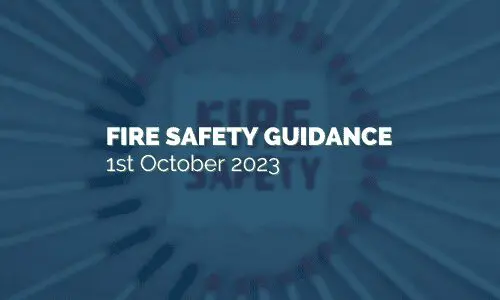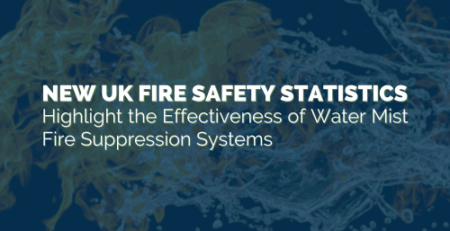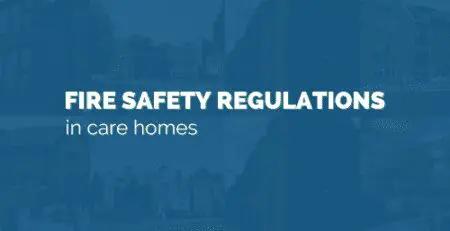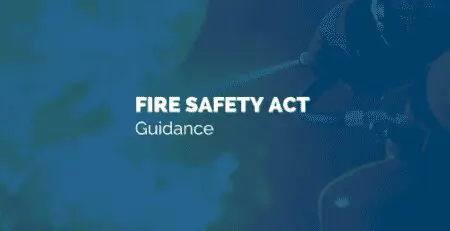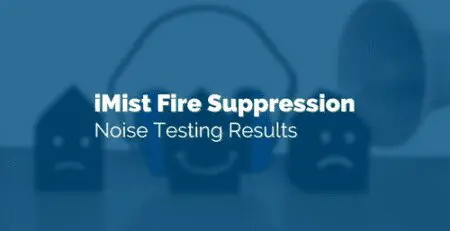New Fire Safety Guidance Comes Into Force on 1 October 2023
Since the Grenfell Tower disaster and subsequent investigations, the fire safety community has experienced continuous change. The introduction of the Building Safety Act 2022, particularly Section 156, marks the third phase of the Home Office’s efforts to enhance fire safety in high-risk buildings. This Act will further amend the Regulatory Reform (Fire Safety) Order 2005, which was recently revised in phase two by the Fire Safety (England) Regulations 2022. The main objective is to improve fire safety measures across all properties falling under the Regulatory Reform (Fire Safety) Order 2005 and to ensure that residents in buildings with two or more domestic dwellings receive the relevant fire safety information for their building. It’s worth noting that while Section 156 emphasises residential buildings with multiple domestic units, these changes apply to all buildings and properties under the scope of the Regulatory Reform (Fire Safety) Order 2005.
In summary, the key changes include:
- Thorough documentation of Fire Risk Assessments (FRAs).
- Ensuring that only competent individuals are appointed to conduct or review fire risk assessments.
- Maintaining records of individuals appointed by the RP (responsible persons) to assist them.
- Documenting fire safety arrangements.
- Taking reasonable steps to identify other RPs for the premises and informing them.
- Inform the other RPs at the premises of their name, a UK address at which they, or someone acting on behalf of them, will accept notices and other documents; and the part of the premises for which they consider themselves to be an RP and keep a record of that information.
The majority of these requirements will be effective as of October 1, 2023. However, “Ensuring that only competent individuals are appointed to conduct or review fire risk assessments”, will come into effect at a later date. This means it’s crucial that you begin to consider the competence of the individuals conducting your fire risk assessment early on. We would recommend using UKAS-approved, third-party certified companies for fire safety work.
The amendment to the Regulatory Reform (Fire Safety) Order 2005 introduces new legal obligations on responsible persons (RPs) to fully document their fire risk assessments. This amendment expands the previous requirement for a written fire risk assessment, which applied only when there were five or more employees. The latest change includes all premises, regardless of the number of employees. This means that organizations of all sizes must document the findings of their fire risk assessments. Additionally, the term “significant” has been removed from Article 9(7)(a) of the Regulatory Reform (Fire Safety) Order 2005, meaning that all findings of the risk assessment, including measures taken or to be taken, must now be recorded.
The amendment also mandates that RPs provide comprehensive and relevant fire safety information to residents of buildings with two or more domestic dwellings.
This information includes:
- Identified risks to residents based on the risk assessment carried out
- Preventive and protective measures in place
- The name and UK address of the responsible person, or someone acting on behalf of them, who will accept notices and other documents
- Identity of individuals appointed by the RP to assist with making or reviewing assessments
- The identity of any persons nominated by the responsible person to assist with non-automatic firefighting equipment
- Any risks where two or more responsible persons share, or have duties in respect of, premises, which responsible persons has been informed of
- Any other matters specified in regulations made by the relevant authority
While residents will receive information about identified risks, additional details may be necessary to ensure their full understanding of the risks and their implications. They may then require additional information to be provided to the residents by the RP of the risk level and the consequences. Additionally, the RP may need to provide information on mitigation measures and timelines for addressing identified issues.
Section 156 of the Building Safety Act 2022 also imposes a requirement for RPs to share fire safety information with other RPs within the building, promoting a cohesive approach to fire safety within the entire building, not just the area they are responsible for. In the event of a change in property ownership or RP, outgoing RPs must transfer fire safety information to incoming RPs, ensuring a continuous record of fire safety information throughout the building’s lifespan (the Golden Thread).
This information includes:
- Records of risk assessments conducted
- Identity of the risk assessor who made or reviewed the assessment
- Names of any other person who is an RP of the premises and a UK address for them
- If the premises is high-risk, the identity of any accountable persons (if known)
- Any fire safety information provided under Building Regulations 2010, Regulation 38
Regarding higher-risk buildings (at least 18 meters tall, with at least 7 stories and containing at least 2 residential units), the RP must make reasonable efforts to identify other RPs and collaborate with Accountable Persons, as defined in Section 72 of the Building Safety Act 2022.
As Section 156 of the Building Safety Act 2022 comes into effect on October 1, 2023, it becomes essential to prepare for the increased documentation and information-sharing requirements. Despite uncertainty regarding the implementation date for competency requirements, we suggest assessing the competency of those conducting or reviewing fire risk assessments to ensure that you are prepared for the change.
Increased punishments
The new laws come with strict penalties for those who don’t follow them. By amending the Fire Safety Order, the Building Safety Act has made fines higher for things like fraudulent impersonation of a fire inspector or not following inspector requirements. These tougher penalties show how important it is to follow fire safety rules.
Also, the Act makes it more important to follow the guidance that’s given under Article 50 of the Fire Safety Order. Meaning, if someone breaks the Fire Safety Order, whether they followed the guidance or not will be considered in court.
For more information, visit https://www.gov.uk/government/publications/check-your-fire-safety-responsibilities-under-section-156-of-the-building-safety-act-2022/fire-safety-responsibilities-under-section-156-of-the-building-safety-act-2022

